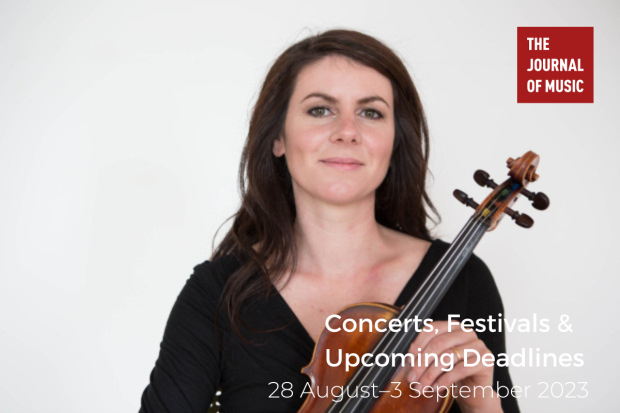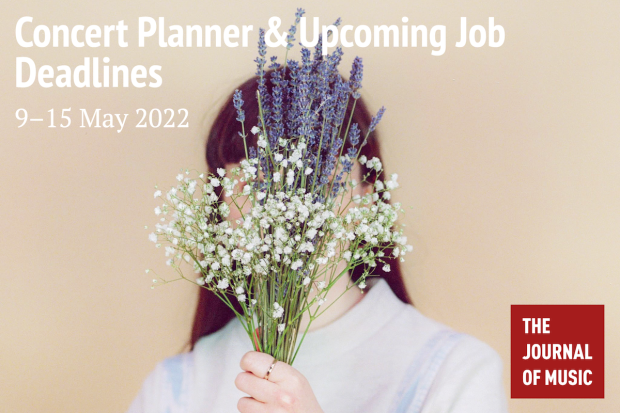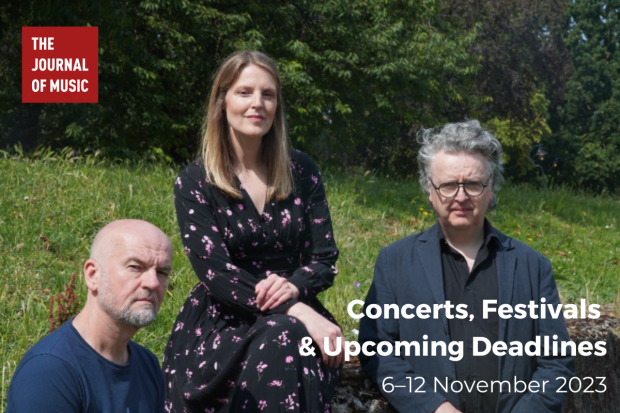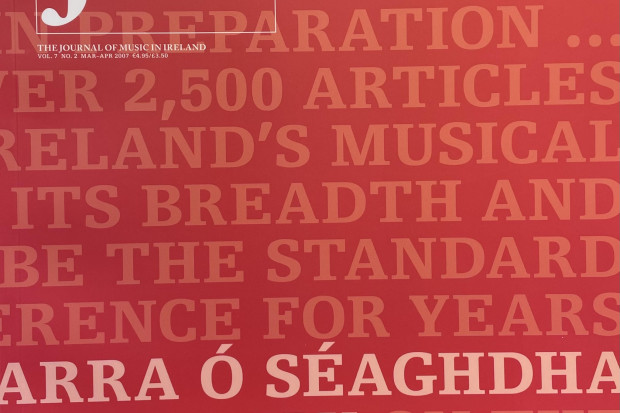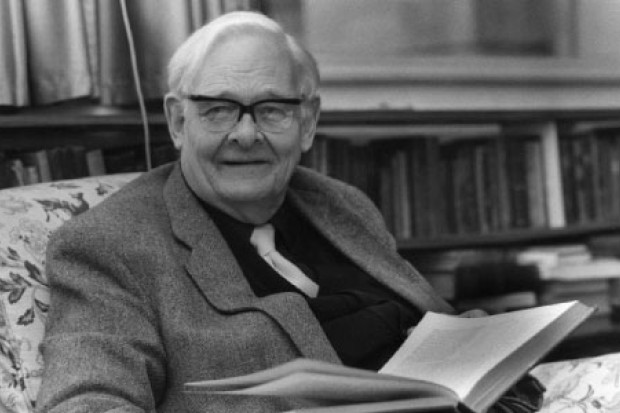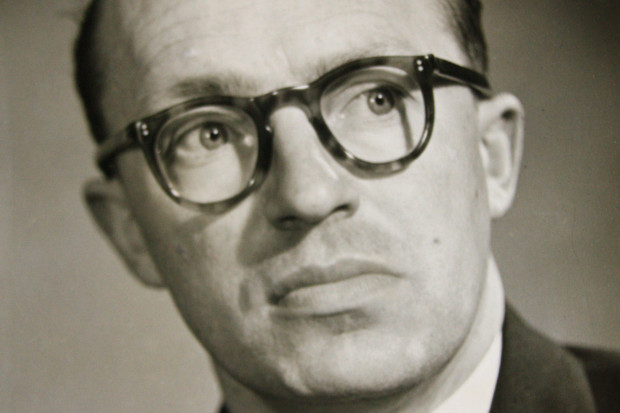
Changes in Music Education in Ireland: Part 2
Music in Schools [1]
In 1952, Donnchadh Ó Braoin (Head Organising Inspector of Music in primary schools, 1931-1947) pointed out that for the majority of Irish children the only musical instruction they would receive was in primary school. Because 70% of schools were one-teacher or two-teacher schools it was essential that all teachers be capable of teaching music efficiently. Since students entering the teacher training colleges did not have the necessary musical foundation they were unable to teach music effectively, thus perpetuating the conditions which denied them a proper foundation. He went on to describe the changes that had been achieved by music inspectors who worked with teachers in the schools and by annual music courses that had been attended by over 4,000 teachers.[2]
It is a salutary exercise to compare the absence of a specialist music inspector for primary school music today with the situation over fifty years ago. In 1950 there were three Organising Inspectors for primary schools, assigned to the areas of Dublin, Sligo and Cork, one of whom, Tomás Ó Cinndealbháin, was appointed Head Organising Inspector of Musical Instruction in 1951. By 1985 the post of Organising Inspector had been abolished and the specialist support system provided for primary schools was gradually eroded.
There are many conflicting messages in the narrative of primary school music education. The new curriculum of 1971, which expanded the role of music in the classroom, was dependent for its delivery on suitable teaching materials and in-service courses for teachers. Several surveys subsequently highlighted teachers’ problems and insecurity in implementing the new music programme.[3] The enhanced status of arts education, including music, in the revised primary school syllabus (1999) has been welcomed, but concerns have been expressed about its implementation and delivery.[4]
In January 2001 a £6.1m arts and music grant for primary schools was announced by the Minister for Education and Science, Dr Michael Woods. It may seem churlish to point out that this works out at £13 per child, and will not go very far when divided between visual arts, music, drama, dance and literature. On a more positive note, in June 2001 the Minister announced a special grant of £67,000 to the music project in St Joseph’s National Schools, Balcurris, in collaboration with the DIT community links programme.
Outside the school curriculum Arts Officers in many counties are organising innovative music projects funded by County Councils and the Arts Council, including choral/music education partnerships, musicians-in-residence, and teachers’ workshops. In Dublin, the Ark, a cultural centre for children opened in 1995, brings access to the arts, including music, to a wide constituency of schoolchildren and their teachers. Fuaim (1997), the Association for the Promotion of Primary Level Music Education, is also a valuable resource for primary teachers.
I have little recollection of music in primary school, apart from singing Irish songs, but I remember accompanying choirs in Cork City Hall in 1948 at the first Cór Fhéile na Scoileanna, a non-competitive festival for primary schools, founded by the Organising Inspector for the Cork area, Proinnsias Ó Ceallaigh. Almost forty years later another inspector, Seán Creamer, founded the National Children’s Choir, which has brought the best choral music to thousands of primary schoolchildren, boys and girls.
At secondary level I attended St Aloysius School, Cork, where music, although it was not a class subject, was an important school activity. Eileen Curran, a member of Fr Seamus O’Flynn’s Cork Shakespearean Company, conducted choirs and prepared us for the annual musical during the Christmas holidays. I particularly remember a production of Menotti’s Amahl and the Night Visitors in the mid-fifties, not long after its TV premiere on NBC.
In the forties very few music teachers were eligible for registration as secondary teachers, and most music teachers were part-time. There was also a gender imbalance, music being seen as an activity for girls’ schools. The first inspector of music for secondary schools was appointed in 1948; at one stage in the seventies there were four secondary school music inspectors. Since then the number has fluctuated; for more than a decade one inspector was entirely responsible for the huge workload, until a second inspector, based in Cork, was appointed in the late eighties.
Examinations were much more relaxed in those days. I did not sit music for Intermediate Certificate, because it was not on the school curriculum, and prepared for Leaving Certificate music outside school. In 1966 a new Intermediate Certificate syllabus was introduced consisting of three courses – music, general musicianship and practical musicianship. A new Leaving Certificate syllabus appeared in 1969 (rev. 1989) that was geared towards entry to university music courses. By the late seventies more qualified music teachers were employed by schools and the number of students sitting state examinations increased, until this trend was reversed at Leaving Certificate level by the impact of the points system.
In the nineties new music syllabi for both Junior Certificate and Leaving Certificate were developed, focusing on performance in a wider range of genres, to encourage greater access and participation in the subject. A major change in the syllabus enables students to present school-based musical activities such as choirs, orchestras, and other groups/ensembles, as the performing element for assessment purposes. The rapidly-developing area of music technology has also been taken into account.
Before and during the implementation of the new Leaving Certificate syllabus in secondary schools the Department appointed a Curriculum Support Team, consisting of four post-primary teachers who worked closely with the Inspectorate and the In-Career Development Unit to advise teachers and to provide resources for schools. This was widely welcomed by teachers and ensured a smooth transition for the new course. The Post-Primary Music Teachers’ Association also provided support for the new syllabus through meetings, seminars and its Newsletter.
While the Leaving Certificate syllabus has been welcomed in many quarters, and there has been a significant increase in the number of students taking the examinations, it has also been the subject of harsh criticism, not least in this magazine.[5] In evaluating the syllabus it is important to remember that it is a continuation of the Junior Certificate programme and that it is designed to be taught through two years (180 hours) of classroom tuition. The examination itself is intended as an end-of-course assessment, not as a selection process for third-level music courses.
Music in secondary schools does not end with Junior Certificate and Leaving Certificate classes. The Department of Education also organises annual examinations for school choirs and orchestras, which provide an additional strand of music-making countrywide. The top choirs are chosen to compete in the annual School Choir Competition in the NCH, at which the atmosphere is similar to All-Ireland Final Day in Croke Park
Many secondary schools today participate in extra-curricular music activities which encourage creativity and complement the school curriculum. The Irish Chamber Orchestra, based in Limerick, holds workshops in secondary schools as part of its education programme, and in County Sligo the Vogler Quartet is currently involved in the development of a music education model at all levels which can be adopted elsewhere. In the choral area both the National Chamber Choir and Cumann Náisiúnta na gCór have developed Education and Outreach programmes in primary and secondary schools.
In 1952 Aloys Fleischmann stated that if full-time music teachers were allowed the status and privileges of the teachers of other subjects this would be an important step towards the integration of music in the curriculum.[6] The secondary school music teacher today fulfils an important role in sustaining arts education, which is often under threat and depends so much on goodwill from school principals and authorities. Extra-curricular school musicals and concerts, music for religious services, graduations and other school occasions are taken for granted. Instead of being integrated the music teacher is often isolated and is in strong competition with other subject areas in seeking resources. Music as a subject for life deserves better.
Third-level music education
When I went to UCC in 1953, degree courses in music were also offered in University College Dublin and Trinity College, Dublin. Music could be taken as a BA subject in these universities and in St Patrick’s College, Maynooth. Candidates for degrees in music in Trinity College could sit examinations without attending a course of lectures in the College. School Music Teachers‘ Certificates, Junior and Senior, leading to a Diploma in Music Teaching and a Certificate in Organ Music were offered by UCD. The teacher-training colleges also provided third-level music education as part of their courses at six locations.
I was one of three students in first year, my fellow students were a Christian Brother, who dropped music at the end of the year, and a Sister of Mercy, who was sent on the missions. In second year I was the only student in the class; there were only a few students in the other two years of the course. Professor Fleischmann, an active composer and conductor, gave all the lectures, except Irish music, which was taught by Seán Neeson, Cork Corporation Lecturer in Irish Music. There was a considerable amount of musical activity in the College: the Art Society and Choral Society drew members from the general student body, and chamber music recitals and orchestral concerts organised throughout the year were well-supported.
In the seventies the explosion of numbers of third-level students, which resulted from the introduction in 1967 of free post-primary education and the third-level grants scheme, brought many changes to university music departments. Additional lecturers were appointed and facilities were improved to cope with the influx of students. Courses were expanded and diversified, giving a far wider range of choices than before. At NUI Maynooth students could take music as a BA degree subject, and traditional Irish music began to flourish in the music department at UCC.
Two other universities came on the scene whose technological origins did not preclude investment in the arts – the University of Limerick (1972) and Dublin City University (1989). In 1993 a Chair of Music was created in the University of Limerick, metamorphosing into the Irish World Music Centre, which offers an eclectic range of postgraduate taught programmes and research opportunities. Today degree courses at Mary Immaculate Training College are validated by UL, while DCU performs a similar function for St Patrick’s College Drumcondra, Mater Dei Institute of Education and the Royal Irish Academy of Music. Both universities have given a home to performance groups: the Irish Chamber Orchestra is based in Limerick, the National Chamber Choir in DCU, but the new DCU Arts centre with a 1,250 seat concert hall and 400-seat theatre looks likely to outshine even UL’s excellent performance facilities.
Meanwhile the main music schools in Dublin and Cork moved into the area of third-level courses. In the seventies the Cork School of Music became the first institution in the country to offer a music-teaching diploma course incorporating academic, practical and pedagogic components. Its BMus degree course, validated by the NCEA, commenced in 1993. At DIT the Graduate Diploma in Music (BMus Perf), the first full-time performance course in the country, validated by the University of Dublin, was developed from 1986.[8] This course has been recently reviewed to include options in instrumental/vocal teaching, composition, music technology and Irish traditional music. From 1987 a BA in music has been available in Waterford Regional Technical College (now WIT), a BA in music performance commenced in the RIAM in 1995, and music has been a component in the Irish Folk Theatre diploma course at Tralee Institute of Technology since 1997.
As practically-based courses have emerged in these institutions university music courses have become less academic, and more performance and special interest options have been introduced. The landmark Bachelor in Music Education course, inaugurated in 1986, is taught conjointly in the School of Education TCD, RIAM and DIT. It includes components in both music and education and has brought a cohort of specialised graduates with a high standard of practical performance into post-primary music teaching.
Fast-forwarding to 2002 a total of eight music degree courses[9] are listed by the Central Applications Office, in addition to eight BA and five BEd courses which include music as a subject. Diplomas in jazz studies,[10] music management and production, and popular music performance[11] are available outside the CAO system. Postgraduate students in Ireland today can choose from a wide range of programmes in music performance, pedagogy, composition, and music technology in Irish universities and third-level institutions. Music departments have expanded and there is a healthy climate of research and development. The trickle of publications on aspects of music in Ireland has gradually increased, particularly in the areas of musicology, cultural studies, and Irish traditional music. However, the increase in student numbers has brought logistical and administrative problems, making it more difficult for lecturers to find time for scholarly pursuits.
It is clear that there have been many changes in third-level music education in Ireland over the past half century. Students today have access to resources such as the Contemporary Music Centre and the Irish Traditional Music Archive, and to the hitherto undreamt-of realms of the world-wide web and music technology. There is also a constant round of seminars, masterclasses, music festivals, and events such as the Mostly Modern series and the Ennis/IMRO Summer School. Third-level institutions, aware of competition, have responded to market demands by providing a wide range of innovative courses. No music department can claim a monopoly as students cherry-pick their preferred choices.
Nadia Boulanger once advised, ‘Do not take up music unless you would rather die than not do so’. Students make up their own minds, but it is the responsibility of all concerned with third-level music education to manage change and to provide best practice for the Irish musicians of the future.
End Game?
What are the changes in music education in Ireland? From my personal perspective there are several answers to that question. In the provision of instrumental tuition for Irish children little has changed since I was a child. In school music and in third-level music there have been many changes over sixty years, as there have been in Ireland itself, some for better some for worse.
There are some changes for performers: more opportunities, more support systems, more competition. And yet the path to an international career is the same. For the young Irish pianist, Finghin Collins, winning the Prix Clara Haskil in 1999 is his passport to an international solo career, as it was for his teacher, John O’Conor, when he won the Beethoven competition in Vienna in 1973.
The integration of traditional music has filtered through the educational system at all levels and there is a new freedom in ‘crossover’ between genres. The technological revolution and the international recording industry have brought music into the marketplace, providing further opportunities for young musicians. The changes in the music profession since Music in Ireland (1952) was published are highlighted in Music Network’s Irish Music Handbook (2nd edition 2000), which lists a comprehensive dossier of individuals, organisations and agencies currently involved in Irish music education.
Music has always held a ‘special position’ in our national culture. From the seventies this was crystallised as more and more attention was given to music in discussions of educational and cultural issues. By the nineties the PIANO Report and the MEND debates had brought all the arguments and some of the solutions forward. Unfortunately although music has a high profile in our national consciousness it has been taken for granted in the educational context.
It is easy to ask a question, perhaps the best way to answer it is, like the Kerryman, to ask another question. What changes are needed for the future? In looking back over my experience of music education it is likely that I have missed some important trends or distorted others, but a very clear pattern emerges in the area of instrumental tuition. It is very simple really, all that is needed is the political will to build on existing strengths and to devise an equitable, ‘joined-up’ system of instrumental tuition countrywide. With that infrastructure in place the proposed Irish Academy of Performing Arts is the logical outcome.
Next comes music in schools: the new primary school music curriculum is ready, but it needs to be effectively implemented. This means that the delivery of the new curriculum must be entrusted to confident teachers with real musical expertise in every school in Ireland, through in-service provision and specialist support in the classroom.
Once the roots are in place from primary level the plant of music education will grow and blossom. Of course it must be nurtured, but there are already numerous individuals and communities in the country committed to music education who are ready to work together. These include secondary school music teachers, who need sufficient classroom resources and support to build on the foundation acquired at primary level in order to develop the full creative potential of every child. Music at third level will then be a natural progression from first and second level.
There have been so many debates and reports over the years diagnosing and prescribing for the ailments of music education in Ireland it is surprising that the patient is alive at all. But there are many positive signs that change may be on the way, and that there is hope of recovery. Change means action. At the beginning of the 21st century Irish music education is at the crossroads, let us hope that it will not end in a cul-de-sac.
Notes
1. Not including Northern Ireland.
2. Music in Ireland, 37.
3. Deaf Ears?, A Report by Donald Herron, Arts Council: 1985, 2.
4. See Forum for Music in Ireland, Submission to the Minister of Education and Science; Music Education Action Group, Report; Frank Heneghan, MEND Report.
5. Barra Boydell, ‘Third-Level Music and the Leaving Certificate’, JMI, July/August 2001, 14-16.
6. Music in Ireland, 82.
7. St Patrick’s, Drumcondra; De La Salle, Waterford (Waterford Teachers’ Centre since 1974); Our Lady of Mercy, Carysfort (closed in 1986); Mary Immaculate, Limerick; St. Mary’s College, Marino; Church of Ireland, Kildare Place (moved to Rathmines in 1969).
8. DIT was granted degree-awarding powers in 1997.
9. TCD, DCU, NUI Maynooth, UCC, UCD, CIT, DIT, WIT. There is still no Chair of Music at UCG.
10. TCD, UCC, UCD, NUI Maynooth, Church of Ireland, Coláiste Mhuire, Marino, Froebel College, Mary Immaculate, Mater Dei, St. Patrick’s College, Tralee IT.
11. Newpark Music Centre.
12. Ballyfermot College
Published on 1 July 2002
Ita Beausang has recently retired from the School of Music and Drama in the Dublin Institute of Technology, where she held various teaching and administrative positions. Her research interests include music education in Ireland, Anglo-Irish music and music criticism.










